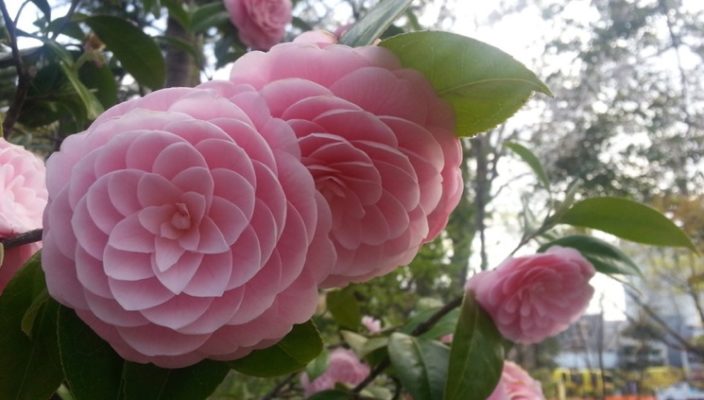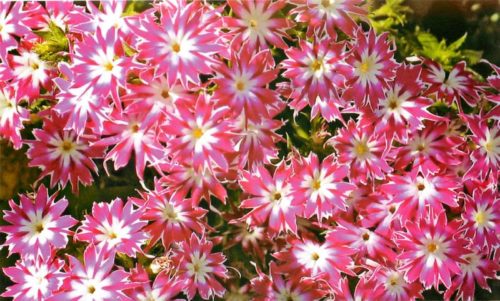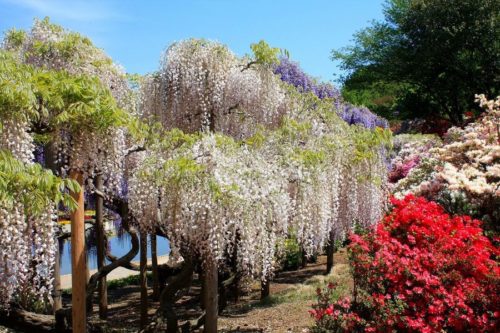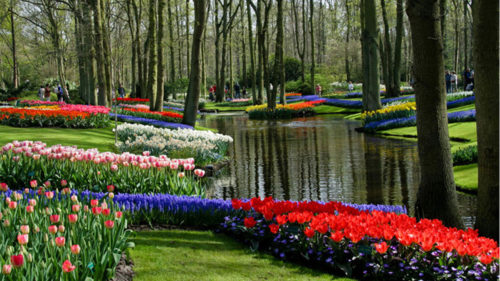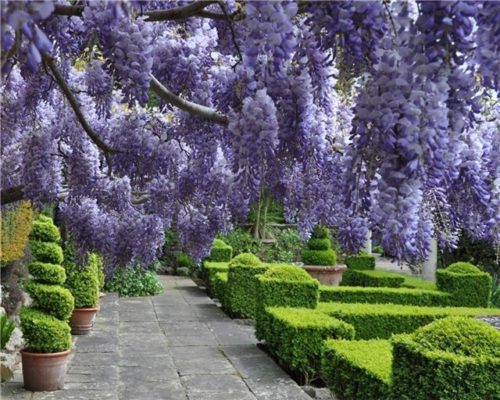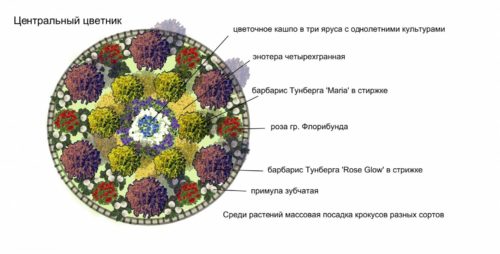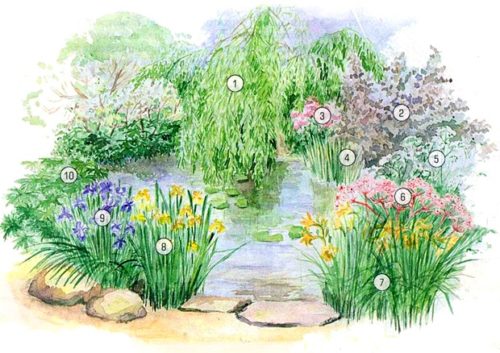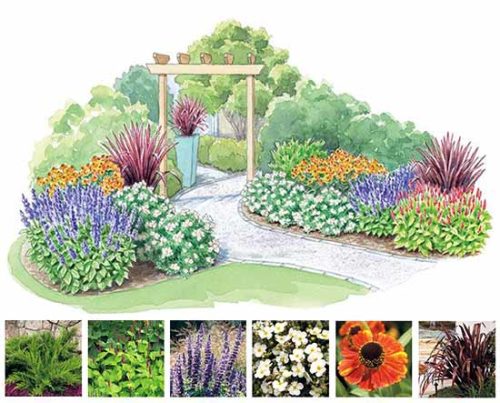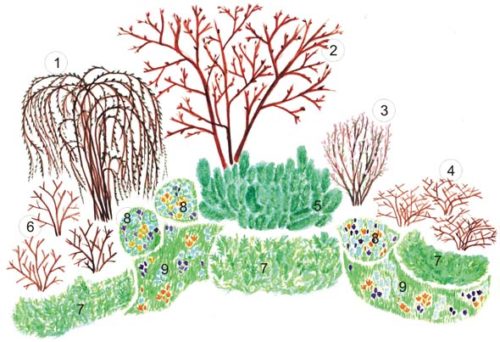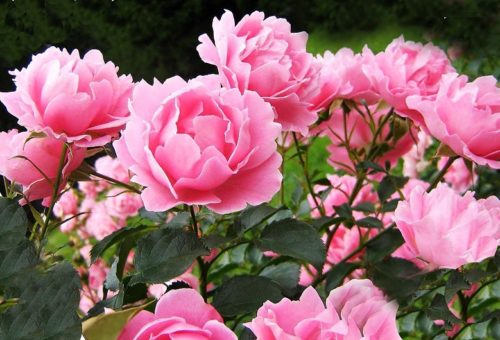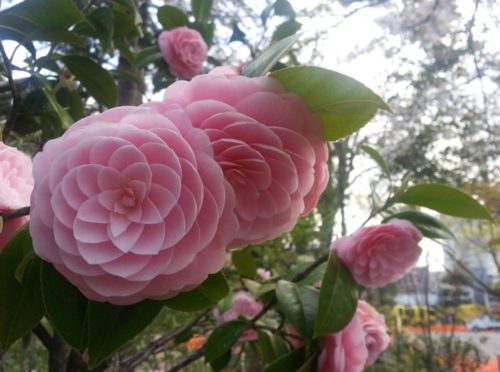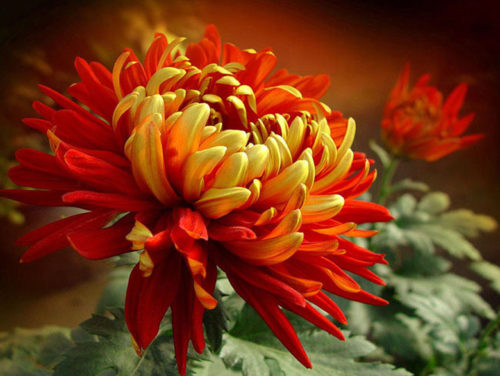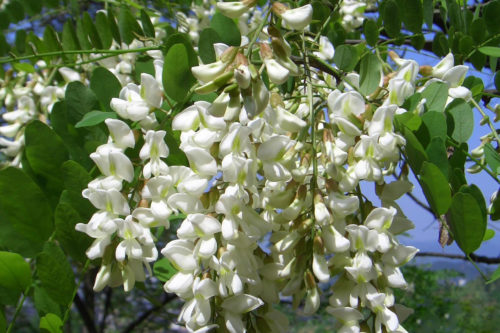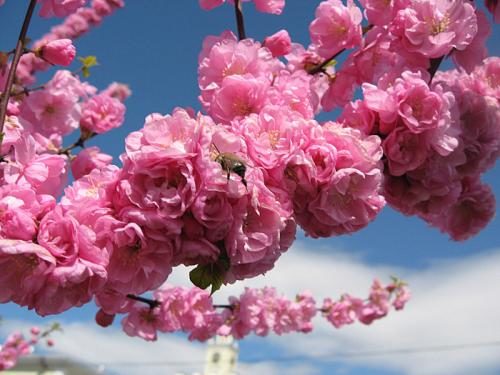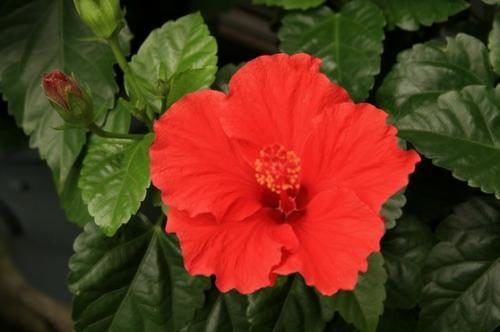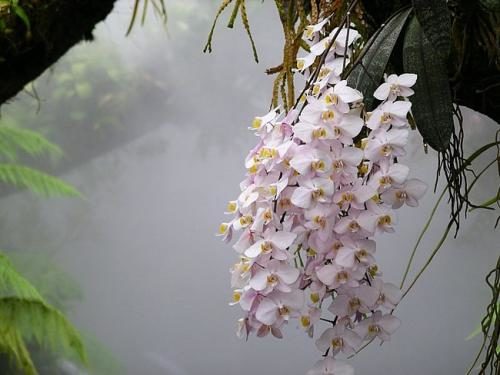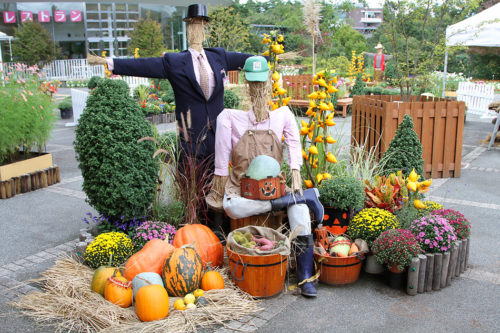Today, very often homeowners want to issue their country-style cottage plot. The visiting card of Japanese culture is not only the gardens of stones, but also the gardens of colors. After all, as you know, the eastern countries can boast of their amazing Flora and the ability to recreate truly original compositions from it. In addition, the Japanese feeds special feelings to colors, inserting a certain symbolism in them. Floriculture in the eastern countries are engaged in both a large scale, organizing delightful gardens of flowers and in private on their destiners.
Content
- Features of traditional Japanese colors
- Planning the landscape of the country area and a Japanese flower garden
- Schemes of Japanese flower beds in the country
- Names and characteristics of Japanese colors
- Registration of the garden plot in Japanese style and small landscape forms
- Japanese Flowers: Video
The Japanese are special respect for the "art of flora", admire the beauty of plant blossoms, use them to decorate their homes and dining tables. For example, no tea ceremony passes without decorating the table with flowers grown in its own garden. It is worth saying that it is possible to grow Japanese flowers today in our country, even taking into account the climate of our latitudes. Next, we will talk about the names of Japanese colors and how they can decorate their site.
Features of traditional Japanese colors
To the peculiarities of traditional Japanese colors can be found as follows:
- Japanese plants grow in soft and warm climates, so they should create appropriate conditions for them to extend and improve their accessibility in terms of our latitudes.
- Beautiful Japanese flowers love the abundance of moisture, so watering such plants should be regularly with a certain frequency. However, it is not worth exercising excessive diligence either, since stagnation of moisture can provoke the root rotting and the development of such a disease as gray rot.
- The varieties of Japanese colors should be planted on solar pools, as in the shade or fellowship their flowering will not be so bright.
- The Japanese are always experimenting with plants, adding something new to their varieties. For example, when removing the varieties, they try to cross the plants so that the flowering of new colors was more abundant and lush.
- Japanese flowers are designed to decorate not only country sites in the "live" form, but also become an excellent addition to the arranged eggs.
Planning the landscape of the country area and a Japanese flower garden
Before planting Japanese flowers, it is necessary to make a project of the countryside landscape and a plan of a future flower garden. So, if you take into account the beginning of the 90s, it can be noted that the builders and designers of that time stood many obstacles that they could not overcome due to the weak development of the architectural industry. Today, even a specific relief, which the regions of our country possess is not a hindrance to build beautiful summer cottages.
As you know, many areas of Russia cannot boast a uniform relief, as in some places, the height difference is several meters. Such a landscape is a significant obstacle for further design of flower beds and a dacha garden. Not exception is the Japanese garden of colors, to decorate which it is desirable to choose a smooth and horizontal platform. The first priority in such a situation is to strengthen the sweeping soil. To strengthen the slope, it is possible to use special mesh designs - Gabions. They do not require a special foundation and cladding, so very convenient when arranging the landscape.
The uneven relief, in addition to steep slopes, puts other obstacles on the way of arranging Japanese gardens - are obstacles in the form of decays between two hills. Sometimes builders decide such a problem thanks to the construction of a special "dam", which perfectly fits into the landscape. The resulting "dam" can be decorated with the construction of alpine slides, waterfalls, miniature ponds, etc.
When the landscape is arranged in the Japanese style landscape, a huge role is given to project work, since during their conduct you can conduct an ideal analysis of the existing territory, taking into account all the features. Then, based on analytical data and measurements, it is possible to make a successful project of the future plot, and thereby finding a rational decision that after a certain time will be able to realize your dream into reality.
The design of the Japanese-style garden plot will provide you with a large area for creativity. The garden can be decorated with different characters in the form of sculptures of stone. Recently, various characters, animals have become popular. For example, it can be an unusual shape of flower pots. In general, any item that can be skillfully beat with the help of plants will become a bright decorative detail that gives your garden individuality.
Schemes of Japanese flower beds in the country
After you have decided on what Japanese flowers you want to grow on your summer cottage, you should compile a flower bed.
The main difference between Japanese flower beds is that flower beds here must be combined with stone compositions. Rocarium in Japanese style includes evergreens of low-spirited shrubs and trees, as well as figures from stones.
You can use one of the proposed schemes:
Names and characteristics of Japanese colors
The following cultures can be found to traditional Japanese plants:
- Chrysanthemum.
- Beniban.
- Sakura.
- Sofa.
- Orchid.
- Japanese rose.
- Japanese Camellia.
Next, we consider in more detail the characteristics and photos of Japanese colors.
Flowers Japanese Rosa
The second name of the culture - Eustoma (Lat. Eustoma). In height, the Japanese rose reaches 70 cm. There are also low-grade varieties of plants. Flowers bright and large flowers having funnel shape.
Rules of planting culture:
- Seying the plant follows at the beginning of spring. Before this, the seeds are carefully prepared for landing, hold the stratification procedure.
- The first shoots appear after 14 days after landing. Sprouts are planted at a distance of 15-20 cm from each other.
- The plant during his life should regularly water.
- Comprehensive fertilizers make twice a year.
Japanese Camellia flowers
Camellia Japanese belongs to the family of tea (theaceae). It grows in the form of low-speed evergreen shrubs. Leafs have an oval shape. Flowers large flowers having pink or red.
Rules of landing and care:
- Plant culture in a half.
- Water flower beds with camellia should be evenly to avoid water stagnation.
- Feed the culture of mineral fertilizers in March and at the end of summer.
Japanese chrysanthemum
It is worth saying that Chrysanthemum, which is familiar to all summer houses, is also a favorite Flower of the Japanese. This culture is often found in national poetry and prose of Japan. In addition, chrysanthmia is often added to give a savory taste into a tea drink on tea ceremonies. Japanese chrysanthemums bloom with bright colors during flowering period. Another culture is beautiful during the bootonization period.
Refers chrysanthemum to many years of cultures. Sit them on solar pools with well-drained soil. Feed flower beds with chrysanthemum in the late spring. For this use potash feeding.
Japanese Sofa - Plants and Flowers
Sophora (Sophora) Japanese otherwise called Japanese Acacia. Belongs to the genus of leguminous crops. Over 50 varieties of this plant are found. Grows in the form of shrubs or low-spirited trees. Culture branches have a curved form. Foliage in the summer period is painted in bright green.
Recommendations for growing plants in the conditions of our climate:
- The plant should be planted exclusively on solar pools, as it loves abundant sunny rays. If we plant a culture in the northern regions, then on the flower bed it is worth organizing additional lighting with phytolamba.
- Maintain the temperature in the area where culture grows, should be at the level of +1 to +12 degrees.
- Water culture follows 1 time in 7-14 days.
- Fertilizers are entered under the root of culture at the beginning of winter. For this, complex mineral fertilizers are suitable.
Japanese flower Sakura
The name of this plant is directly associated with Japan and its original culture. In this country, there are special charts that displays the dates of the flowering of certain sakura varieties. This is necessary so that local residents can visit Japanese gardens of flowers and sorties to enjoy the flowering of this majestic plant. Sakura is an integral component of all Japan's garden-park compositions.
Beniban
This flower is not in vain called the mythical, as it blooms very unusual paints - orange with a brightly raspberry tint. Culture bloom is observed in the summer. Beniban belongs to the genus of chrysanthemums. Externally, the flower looks like a thistle.
Orchid
This plant feels great in the conditions of the Japanese climate. In our latitudes, orchid is most often grown at home on the windowsill, as this plant is very demanding about care. Drainage falls asleep to the bottom of the pot. The soil should be used by a specialized, purchased in the store and designed specifically for orchids.
Registration of the garden plot in Japanese style and small landscape forms
When designing a landscape of a Japanese garden, colors are often used small landscape forms. Under this concept, all sorts of small decorative details are hidden, which will help you make your garden in unique. Here you can take conversations, canopies, various sculptures, fountains, columns. An early landscape is ranked garden furniture and barbecue facilities. The use of such parts turns the design of the garden plot into real art.
If you need to divide the territory on the zones, then for this purpose you will be suitable for various types of decorative walls, screen, lattices, pavilions, arbors and other similar designs. They can help implement a few ideas on one site. For example, make a corner of wildlife, and next door to recreate this or that composition of stone.
If you decide to use decorative lattices, do not forget that they are still an excellent frame for vertical landscaping. In general, any vertical design that you put in the Japanese garden will serve as a platform where you can place lianas and various compositions in decorative baskets. Such structures are usually performed from wood, but sometimes made from metal rods or even from bamboo.

